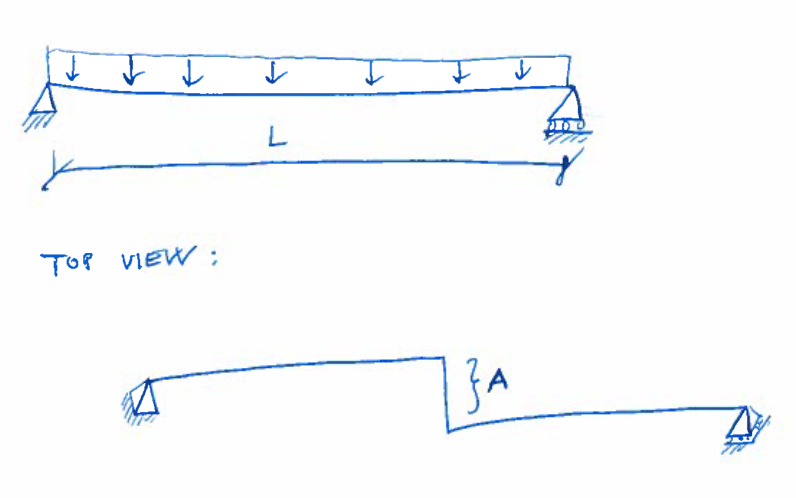greznik91
Structural
- Feb 14, 2017
- 186
English is not my 1st language.
What Im asking is what does it mean when beam has "a broken line" (i dont know a proper expression for this).
I compared a normal - straight line beam with a broke beam (distance A is small - lets say 300 mm) in FEM software and got the same results (bending moment, shear forces).
Is there anything special/different? Something to be careful about when reinforcing beam - especially at the point where line breaks? Shear reinforcement because a part that is perpendicular to other two lines transfer whole load from one to other line?

What Im asking is what does it mean when beam has "a broken line" (i dont know a proper expression for this).
I compared a normal - straight line beam with a broke beam (distance A is small - lets say 300 mm) in FEM software and got the same results (bending moment, shear forces).
Is there anything special/different? Something to be careful about when reinforcing beam - especially at the point where line breaks? Shear reinforcement because a part that is perpendicular to other two lines transfer whole load from one to other line?

